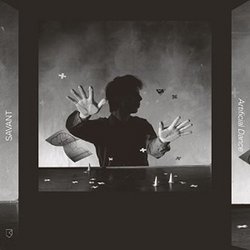| All Artists: Savant Title: Artificial Dance Members Wishing: 0 Total Copies: 0 Label: RVNG International Release Date: 9/4/2015 Genres: Dance & Electronic, Pop Styles: Electronica, Dance Pop Number of Discs: 1 SwapaCD Credits: 1 UPCs: 798295512369, 798295512369 |
Search - Savant :: Artificial Dance
 | Savant Artificial Dance Genres: Dance & Electronic, Pop The story of electronic music pioneer K. Leimer continues with a focus on his auteurist studio project Savant. Compiling the standalone album, 1983?s The Neo Realist (At Risk), with Savant?s debut 12? and a grip of compila... more » |
Larger Image |
CD Details
Synopsis
Product Description
The story of electronic music pioneer K. Leimer continues with a focus on his auteurist studio project Savant. Compiling the standalone album, 1983?s The Neo Realist (At Risk), with Savant?s debut 12? and a grip of compilation and unreleased tracks, Artificial Dance documents Leimer?s complete collaborative venture into the unpredictable realities of music, exploring the gulf between what is expected by its creators and what is eventually - and eternally - committed to tape. Savant was designed by Leimer to tap into entropic truths, asserting an uncaged counterpart to the loop-based minimalism he produced in isolation (recently surveyed on RVNG Intl.?s A Period of Review (1975-1983)). Aligning himself with the Cage-ean principles of chance operations and musical contingency, Savant was a band sans jam. Allegorically, a blindfolded collaboration whose happenstance source music Leimer would sample, loop and sculpt at will. Leimer was creatively autonomous to the point of being a persona absentia in Seattle?s 80s rock scene. Unconcerned by social status, Leimer enlisted musicians from experimental and post-punk groups in the area to come record as Savant at his home studio, Tactical. Among them were ambient composer Marc Barreca, John Foster (founder of Op Magazine - the experimental music publication), Jim and David Keller of the New Flamingos, and their bandmate Alex Petit. Others, like Roy Finch and Dennis Rea, came from a similar orbit. Even with these musicians at his beck and call, Leimer implemented a disarming musical strategy. Savant would have no fixed line up and often musicians would be asked to play instruments far outside their forté. Leimer would however give loose rhythmic direction for the musicians to develop spontaneously against click-tracks. When the performance locked in with Leimer listening at the controls, he?d capture it to tape. These moments became the soul of Savant and the combustive elements that would variegate its timbres. Savant tonally operates in a space between This Heat?s dark primitivism and the found sound collage of Brian Eno & David Byrne?s My Life in the Bush of Ghosts. These analogies are simply stylistic, as the narrative behind The Neo-Realist?s production makes clear Leimer was concocting via more alchemic means, avoiding genre aspirations by looking for accidental moments of musical intrigue and discovery. Leimer explains this process in the collection?s liner notes: ?I was looking for flaws, for faults to act as the stand-out features of the music.? Far from a provisional stab at avant-garde sensibilities, Savant represents Leimer?s repudiation of ambient music?s passive side. Artificial Dance embodies a perfectionist?s family portrait of outré musicians conforming to Leimer?s nonconformist musical ethos. Fitting for its name, Leimer created conditions for asocial brilliance with Savant, materializing an outward offering from an inward studio and a collaboration of audacious invention.
